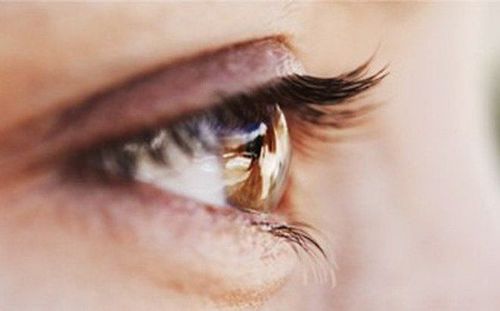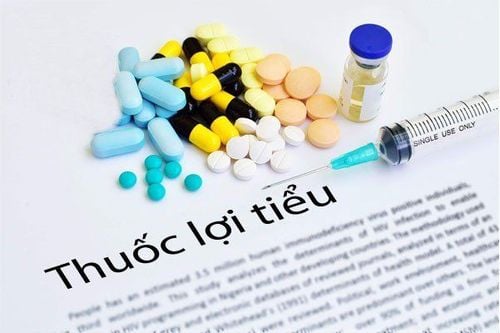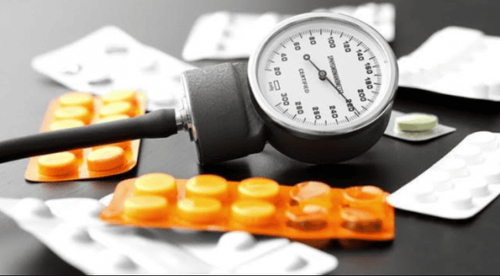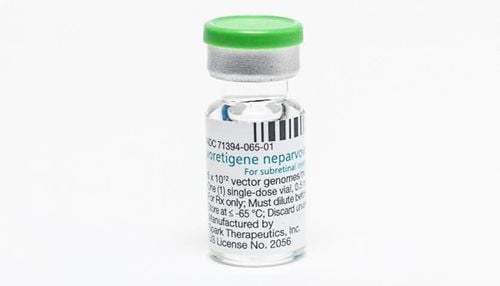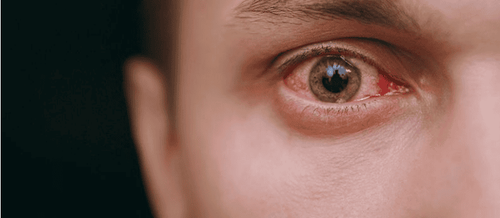This is an automatically translated article.
The article is professionally consulted by Master, Doctor Hoang Thanh Nga - Ophthalmologist - Department of Medical Examination and Internal Medicine - Vinmec Ha Long International General Hospital.
Ocular hypertension is a dangerous disease that seriously affects vision, if not detected and treated early, can lead to the risk of blindness. So what is ocular hypertension and how is it treated?
1. An overview of ocular hypertension
Ocular hypertension is a term used when it comes to conditions where the pressure inside the eye (also called intraocular pressure) is higher than normal. Eye pressure is measured in millimeters of mercury (abbreviated as mmHg). For a normal person, eye pressure will range from 10 to 21 mmHg. Ocular hypertension occurs when the intraocular pressure in one or both eyes exceeds 21 mmHg. Thus, ocular hypertension is the beginning of glaucoma.
As of 2013, approximately 2.2 million people in the United States have glaucoma and more than 120,000 are blind from the disease. These statistics alone underscore the need to identify and closely monitor individuals at risk for glaucoma, especially those with ocular hypertension. According to recent studies, people with ocular hypertension have an estimated average 10% risk of developing glaucoma within 5 years. However, the risk of disease progression can be reduced to 50% if eye pressure levels are reduced by means of medication or laser surgery. This also shows that early treatment will significantly reduce the risk of vision loss for patients.
The following are factors that increase the risk of glaucoma, including:
People with thin corneas are more likely to develop glaucoma than others The older the age, the lower the intraocular pressure. Glaucoma is increasing, so patients over 65 years of age are at increased risk of glaucoma. Southeast Asians or African Americans will have higher mean IOP than Caucasians, so they are more susceptible to glaucoma. In addition, African-Americans are also thought to be at increased risk for optic nerve damage and primary open-angle glaucoma. Some studies have also shown that women have higher mean IOP than men, especially postmenopausal women. People with chronic conditions such as high blood pressure and diabetes are at a higher risk of developing glaucoma. People with severe nearsightedness or existing eye injuries People with a family history of glaucoma or ocular hypertension
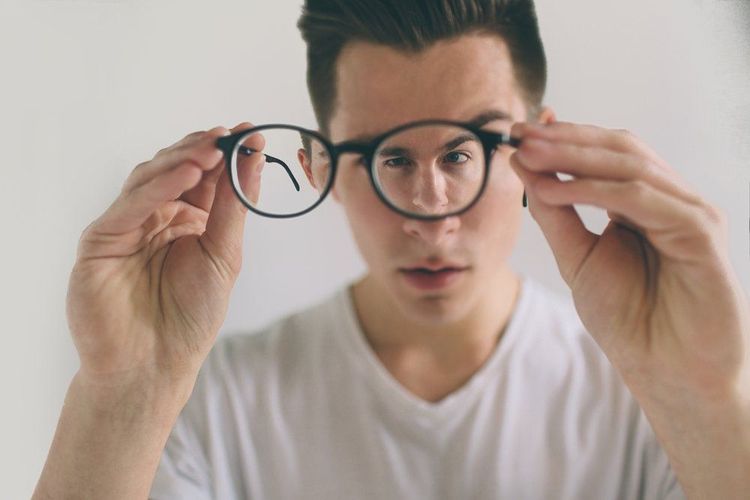
Những người cận thị nặng dễ có nguy cơ bị tăng huyết áp mắt
2. Causes of ocular hypertension
It can be seen that for people with ocular hypertension, the increase of intraocular pressure is a top concern, because this is one of the main causes of glaucoma.
An imbalance in the production and drainage of fluid inside the eye creates high pressure in the eye and interferes with the functioning of the channels that draw fluid from the eye. From there, an increase in the amount of fluid inside the eye leads to increased pressure.
You can imagine the high pressure inside the eye like a water balloon. The more water is put into the ball, the higher the pressure inside it. This is similar to the existence of excess fluid inside the eye, at some point, these fluids will cause high pressure, severely damaging the optic nerve.
People with thick corneas will have higher than normal eye pressure levels. In fact, the eye pressure in these people may be lower or normal, but because of the thick corneal muscle, the measurement results are changed.
3. Symptoms of ocular hypertension
Most people with ocular hypertension do not have obvious symptoms. Therefore, regular eye examination is an extremely important step to prevent timely any damage due to high pressure to the optic nerve.
4. Diagnosis of ocular hypertension
Before performing diagnostic tests for ocular hypertension, the doctor will ask the patient to provide his or her medical conditions, such as whether you have damage to your eyes, or your vision. Is it restricted or not?
To measure intraocular pressure as well as rule out the possibility of primary open-angle glaucoma, or identify a secondary cause of glaucoma, the doctor may order the patient to perform tests below:
Optometry : this is considered the initial assessment of the patient's vision, which determines the extent to which you can see a particular object. The doctor will conduct vision measurement by having the patient read the letters attached to the board at a certain distance. Slit lamp examination (microscope): gives a magnified image, helping the doctor see clearly the structures of the eye such as the eyelid margin, cornea, anterior chamber and iris. In addition, this test also helps measure damage to the anterior part of the eyeball. Tonometry method: used to determine changes in pressure inside the eye. This measurement method will be applied to both eyes at least 2-3 times. Because the intraocular pressure in each person can change at different time frames. Therefore, this test will be done at different times of the day, such as morning or evening. If the pressure difference between the two eyes is 3 mmHg or more, the patient is likely to have glaucoma. Even if the intraocular pressure is continuously elevated, it increases the risk of early primary open-angle glaucoma. Ophthalmoscopy: helps to check for abnormalities of the optic nerve. Ophthalmoscopy: helps to check the drainage angle of the eye. To perform this test, the patient will wear special contact lenses into the eye. This is an important test that helps the doctor determine the narrow, open, or closed angles of the eye and rule out other possibilities that could be the cause of increased intraocular pressure. Peripheral vision test: The doctor will use an automatic image field machine to check the patient's peripheral vision. This test may need to be repeated several times (every 2 months) in cases of high glaucomatous lesions. However, you only need to have this test once a year if your risk of glaucomatous damage is low. Check the heart rate or corneal thickness: the test is done through the use of an ultrasound probe to accurately determine the index of the patient's intraocular pressure. If the intraocular pressure is thin, it may give false low pressure test results, and conversely, if the intraocular pressure is thick, it may give false high pressure results.
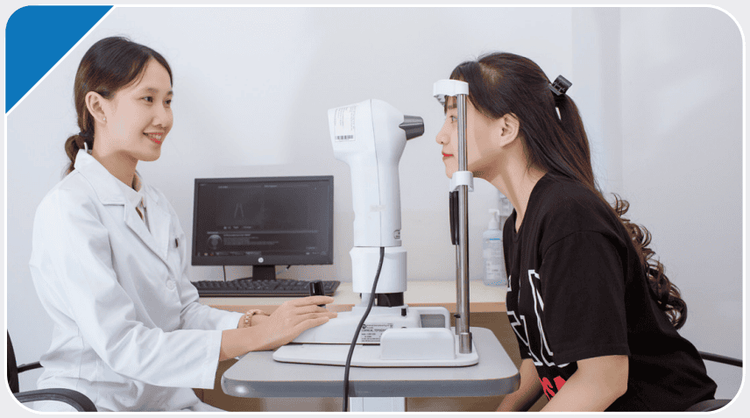
Đo thị lực ở Vinmec để chẩn đoán huyết áp mắt chính xác nhất
5. How to treat ocular hypertension?
The main goal of treatment for ocular hypertension is to help reduce eye pressure before it causes serious complications, especially vision loss. People in groups at risk for glaucoma or optic nerve damage should be treated as soon as possible.
Accordingly, patients can self-treat ocular hypertension at home with prescription drugs from a doctor. However, in order for the treatment to be highly effective, the patient needs to adhere to and strictly follow the doctor's instructions on the dosage as well as the way to use the drug. Improper use not only reduces the effectiveness of the drug, but also increases intraocular pressure, causes serious damage to the optic nerve, and can even lead to the risk of permanent vision loss.
Depending on the condition of each person, the doctor will offer different treatment options. In some cases with intraocular pressure exceeding 21 mmHg, topical treatment is indicated. For patients with an intraocular pressure of 28 mmHg or higher, certain medications may be used. These medications are usually in the form of eye drops. After 1 month of taking the drug, the patient needs to return to the doctor to check if the pressure level has decreased and if the drug has caused any side effects? Follow-up visits will be repeated approximately every 3-4 months. Once intraocular pressure has been reduced to normal, the interval between follow-up visits will be longer, at least once a year.
In addition to the drug treatment of ocular hypertension, the doctor may also ask the patient to perform laser surgery. However, this method is less commonly recommended because it may carry some higher risks than other methods. Even so, in cases where the patient cannot tolerate ocular hypertension medication, surgery may still be an appropriate option.
Ocular hypertension is a dangerous disease but still quite unknown to many people, so early examination and treatment is very important. When you see signs of disease or vision loss for any reason, you should go to the medical center for examination, the doctor will give you the best advice.
Customers can directly go to Vinmec Health System nationwide to examine and treat eye diseases or contact the hotline HERE for support.
Reference source: webmd.com




